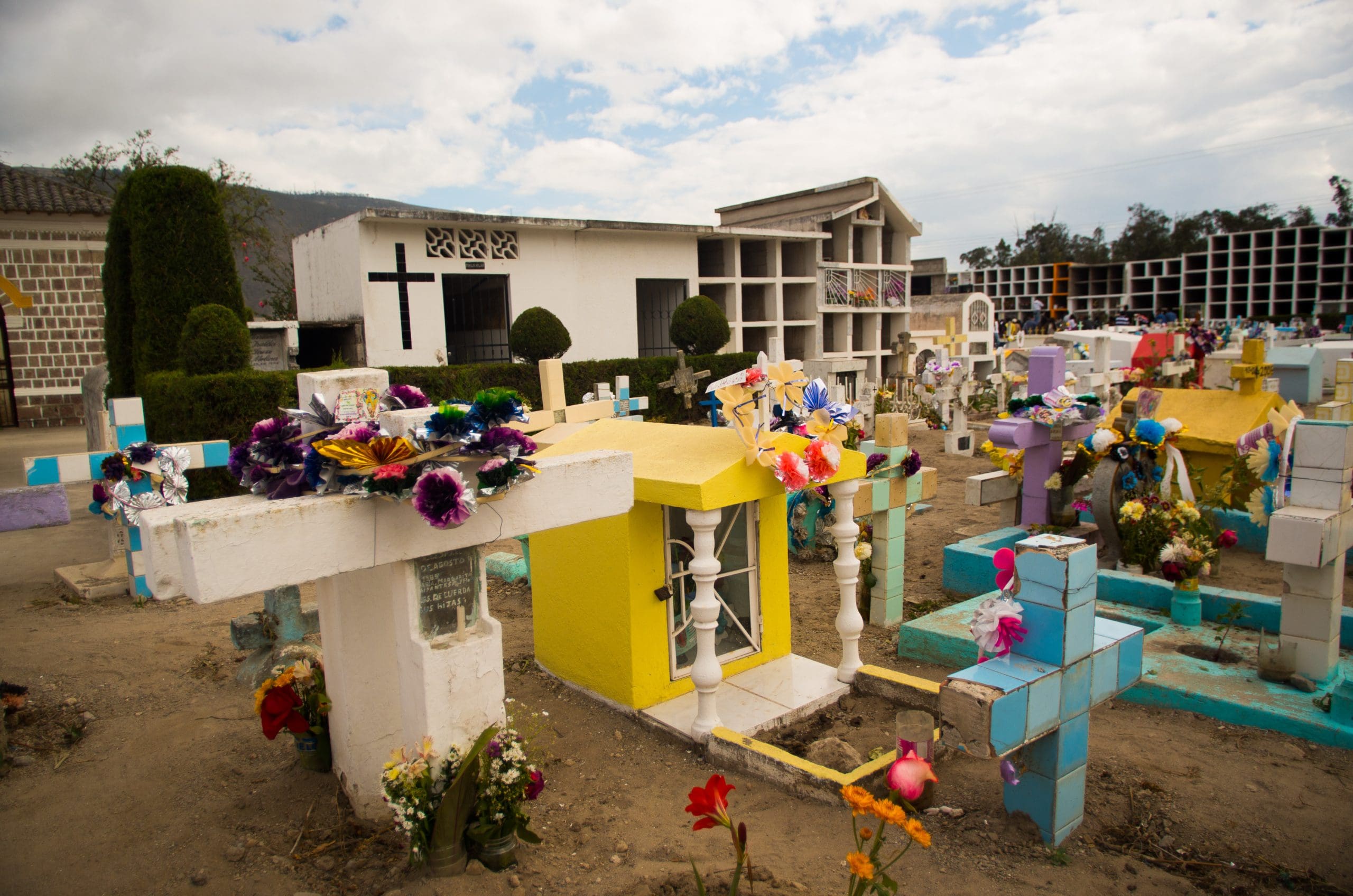
Death and Dying in Costa Rica
Adapted by author October 2015
Funeral and burial practices in Costa Rica differ widely from those of western cultures. As Catholics by tradition, Costa Ricans believe the soul leaves the body at the moment of death so the deceased needs to be left alone to decompose. Embalming is rarely done, so immediate internment is necessary. Bodies may be stacked in graves and later moved to accommodate more bodies. This too is associated with revering the departed soul over their mortal remains.
For insight, here is an overview of typical funeral events following the death of a Costa Rican community member.
A vela, something akin to a wake, is taking place in Funeraria Atenas for an elderly woman who died the night before at the local clinic. Family members and friends are viewing her body in a chair-filled room, lifting their small children in attendance to view her. The children gaze without fear into the face of the lady.
Hearing the news
As is traditional, this woman’s body has not been embalmed so burial, by necessity, must occur as soon as possible. Friends and family learned of her death through word of mouth. If she had been a woman of means, her obituary would have been printed in La Nación. A news announcement was aired on television as happens several times daily when Ticos stop everything and look up at the screen to see if someone they know has died. Family members have been at Funeraria Atenas all night, dressing and preparing the deceased woman’s body.
For this funeral, the cause of death was determined by attending doctors at the clinic, so there was no need for an autopsy. In cases of accidental death or suicide, or if there is any question of cause, the police must be called, and most probably an autopsy must be performed by a pathologist.
If someone elderly dies in the night of what appears to be natural causes, discovered the following morning by family members, a doctor cannot pronounce the cause of death. Anyone dying outside a hospital must undergo an autopsy. The death certificate must be signed by someone in authority to provide the cause of death.
A back room of Funeraria Atenas holds an array of caskets with cards listing the price, which includes flowers and transportation of the body to the church and from the church to the cemetery. The caskets are made narrow to fit into the limited grave spaces — 25 inches wide (three inches less than the standard North American casket), but a casket can be made to accommodate a larger person.
If we were to follow our recently deceased, immediately after the vela, her casket covered with flowers will be taken in a hearse to the church for a mass. At the end of the mass the family will announce the time and place when the novena — nine days of prayers — will begin.
Then the pallbearers will carry the closed coffin, followed by those attending the funeral, on a long somber walk from the church, blocks away to the Atenas cemetery. Townspeople not in attendance will purposely clear the town square to ease traffic for the procession. since police do not provide traffic assistance.
Family vault
In the Atenas Cemetery a white tiled vault purchased by the deceased’s family awaits her burial, divided into four sections to fit family members who have died or will die.
Vaults are assembled with four spaces in order to accommodate other bodies. If another family member dies and more space is needed, the remains that are left after five years may be put into a bag and placed into one of the niches or perhaps beside a spouse or loved one. By law, at least one family member must be present at the time the remains are removed.
Not everyone can afford to purchase a lot or pay the estimated 800,000 colónes needed to construct a vault. The cemetery accommodates the indigent with a long row of rental graves or nichos, available for 2,800 colónes a year. In this “low rent” section, after five years, the bodies will be removed to a space if it has been made available in a family vault. Or they may be interred in a common grave, or fosa commún, located on the grounds. The reality of limited space in rented or owned graves has resulted in an ongoing removal of bodies to the common grave after five years of interment.
The simplicity of Tico living is often expressed as pura vida. In their earthly passing, Ticos extend pura vida into la pura muerte.

